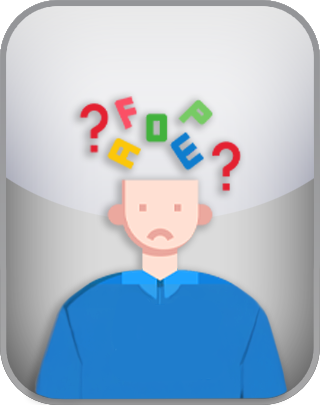Dyslexia Test
Dyslexia is a neurodevelopmental condition affecting reading, writing, and spelling, often linked to difficulties in phonological processing, working memory, and visual-spatial perception. Research, such as Snowling’s (2000) work on phonological deficits, highlights how individuals with dyslexia struggle to decode words and process sounds. Studies like Stein’s (2018) exploration of the magnocellular theory suggest visual processing challenges, while Gathercole and Alloway (2006) emphasize working memory limitations. The National Reading Panel (2000) further underscores fluency and comprehension issues as key markers. This questionnaire is an informal tool inspired by these findings, designed to help you reflect on experiences potentially related to dyslexia. It is not a diagnostic instrument—formal assessment requires a professional evaluation.
Question 1 of 20
I confuse similar-looking letters (like "b" and "d" or "p" and "q").
| Disagree | Agree |
NEXT
Dyslexia remains a widely studied yet often misunderstood condition, impacting millions globally. Its effects ripple through education, work, and daily life, often presenting unique challenges that require tailored strategies. This questionnaire, while informal, draws inspiration from decades of research into how the brain processes language and visual information. For many, the journey to understanding dyslexia begins with subtle clues—missed words on a page, a hesitation in spelling, or a fleeting sense of frustration during tasks others find simple. These moments, though small, can accumulate into a broader picture that prompts deeper exploration.
The design of such tools often balances accessibility with insight. By grouping items into facets like phonological processing or working memory, this questionnaire mirrors how researchers dissect dyslexia’s complexity. Phonological difficulties, for instance, tie back to the brain’s struggle to map sounds to letters, a hurdle well-documented in studies of child literacy. Reading fluency, meanwhile, reflects the real-time demands of decoding text, a skill that can lag even in bright individuals. Visual-spatial challenges hint at another layer—perhaps the way the eyes track lines or the mind juggles spatial cues. Memory, too, plays its part, as holding information briefly can feel like grasping sand for some.
Beyond its structure, the test’s value lies in its invitation to pause and reflect. In a world that prizes speed—quick replies, instant results—slowing down to consider one’s own patterns can feel counterintuitive. Yet, this pause can spark curiosity or even relief, especially for those who’ve wondered why certain tasks feel harder than expected. It’s not about labeling but about understanding. For students, it might highlight why homework drags on; for adults, it could explain a lifelong aversion to dense reports. The rescaling to 0–100 offers a familiar metric, aligning with how we often gauge progress or difficulty in other areas of life.
Of course, no tool like this stands alone. It’s a stepping stone, not a destination. Professional assessments, with their detailed batteries of tests, remain the gold standard for diagnosis. Psychologists might use standardized measures like the Woodcock-Johnson or dyslexia-specific screeners, paired with interviews and history-taking. This questionnaire, by contrast, is a conversation starter—something to bring to a teacher, a parent, or even oneself. Its roots in research lend it credibility, but its simplicity keeps it approachable, sidestepping the jargon that can cloud academic papers.
Ultimately, tools like this remind us that learning differences are just that—differences, not deficits. They shape how we navigate the world, often in ways that build resilience or creativity. Someone who struggles to read fluently might excel at problem-solving; another who forgets sequences might see patterns others miss. The questionnaire doesn’t solve these mysteries, but it shines a light on them, offering a framework to ask better questions. In a classroom, an office, or a quiet moment of self-reflection, that’s a small but meaningful step toward clarity.

